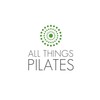Premium workshop
You can view a 2 minute preview. For details, scroll down below the video.
Description
Join Phillip Beach in his workshop where he shows how we can re-tune our bodies so we can move in the way they were designed. He shows different archetypal postures of repose, and shows how they have been lost over the years. After showing the simple movements we should be able to do, he gives us tools to incorporate them in our lives so we will be able to keep our bodies in tune.
Objectives
Objectives
- Learn the archetypal postures of repose
- Discuss the concept of "biomechanical tune"
- Learn why these postures are so important
- Learn how to prescribe these postures to your clients
What You'll Need: No props needed
About This Video
Comments
Skip to Latest
Malak ~ Thank you for your forum post. When you go to the workshop on the site, there will be a Buy Now button above the video. This is not available on the app, so you will have to be logged in to the site to see it. I hope you enjoy this workshop!
10 years ago
Gia - ( I know we cannot do this with classes) but is it possible to download this workshop and view it offline? as it is over 2 hrs long?
10 years ago
Diana ~ Unfortunately we do not offer the option to download workshops at this time. It is on our list of projects for the near future to work on limited downloads with the iOS app.
10 years ago
Fantastic workshop on moving the body as a whole and functional posture. Great concepts and application for rehabilitation and creating a truly well-tuned body. Thank you for including Phillip's work here, would love to see more!
10 years ago
Dear PA. Could you give an update on downloads on iOS for workshops. We are now 8 months on which presumably means we are getting there in terms of the near future. Love your workshops and would love them so much more if I could have them on hand to watch when travelling and no wifi... Watching a workshop is by far my preferred type of video viewing at, for example an airport or pool. When your techs look at this could they also give the option to delete one video at a time when managing a download list. We are limited to 5 downloads (which is fine), but it appears the only way to remove a single video from the download list is to sign out, lose everything and start again from scratch (please correct me if I'm wrong!!!). Thanks.
9 years ago
Absolutely wonderful!!! Thank you, Philip for bringing this information to PA. Please, more.
I am so thankful for PA, the amazing classes and workshops you provide. Thank you.
I am so thankful for PA, the amazing classes and workshops you provide. Thank you.
9 years ago
Dear Moderators. Any update on the comment made back in June (following on from Diana's request in this thread last year). There were 2 points raised. (1) Update on when we can download workshops, and (2) how we can remove a single video from the download list without having to sign out and lose everything. Thanks, David.
9 years ago
1-10 of 14
You need to be a subscriber to post a comment.
Please Log In or Create an Account to start your free trial.



















